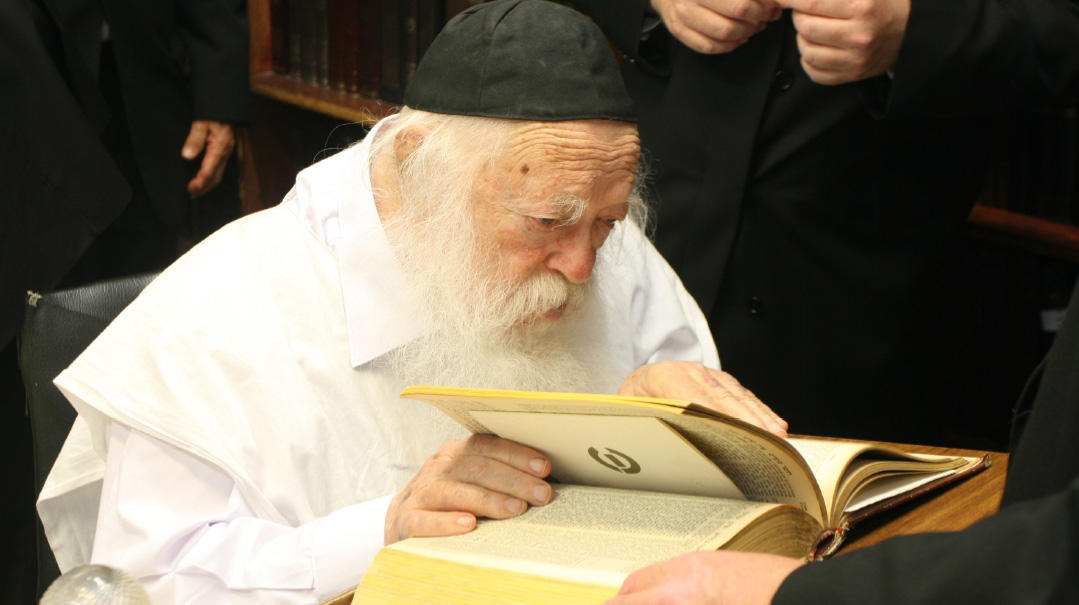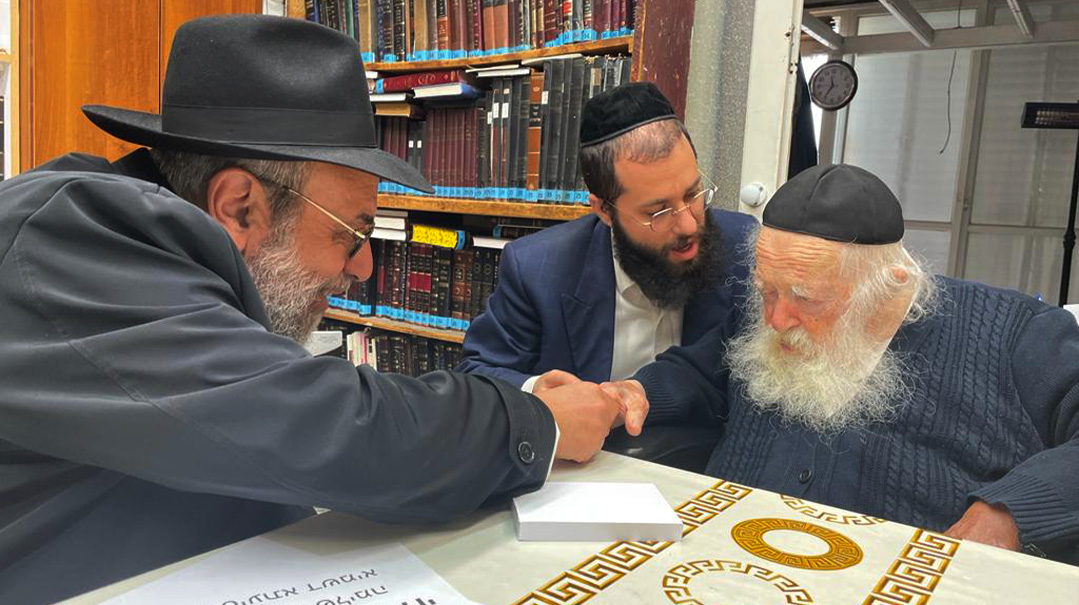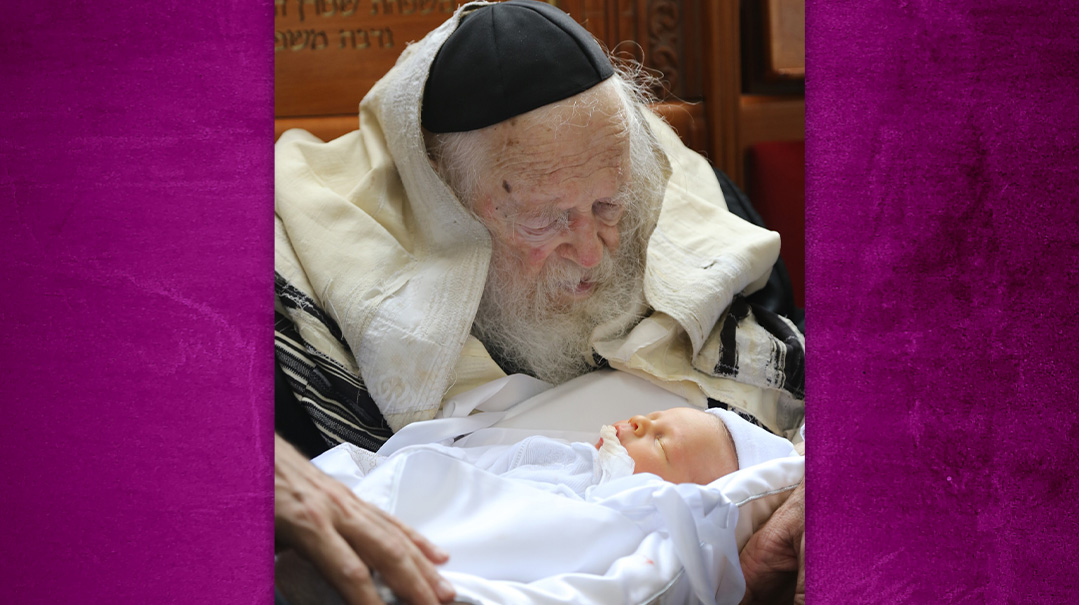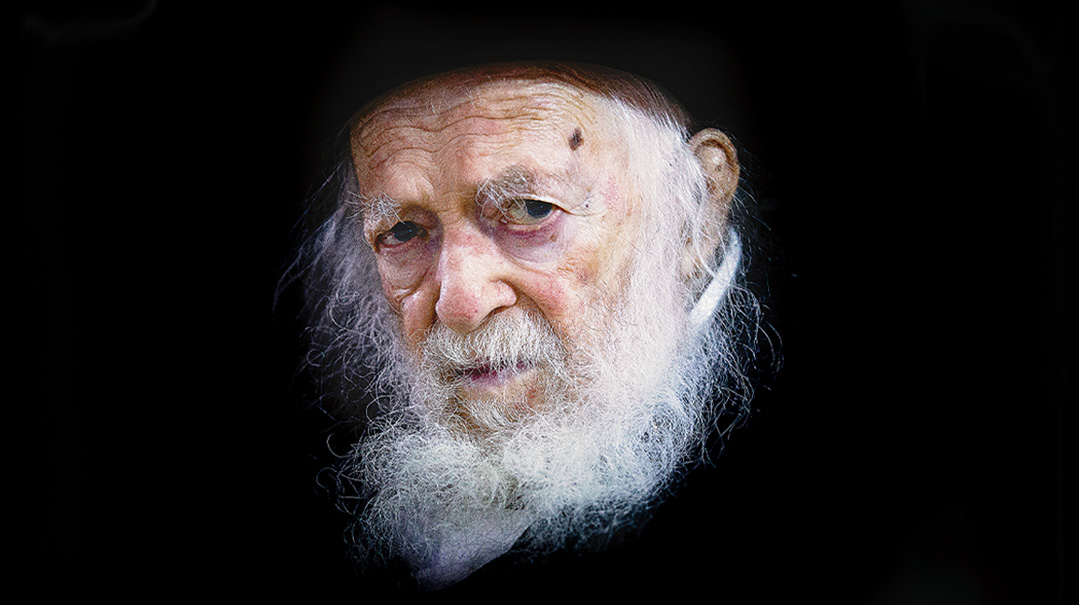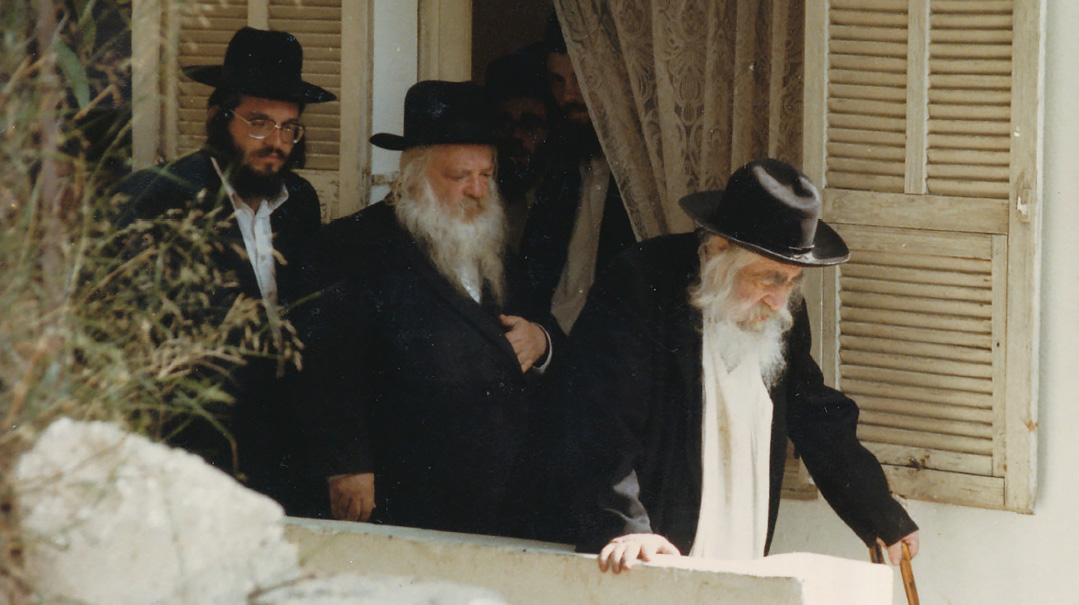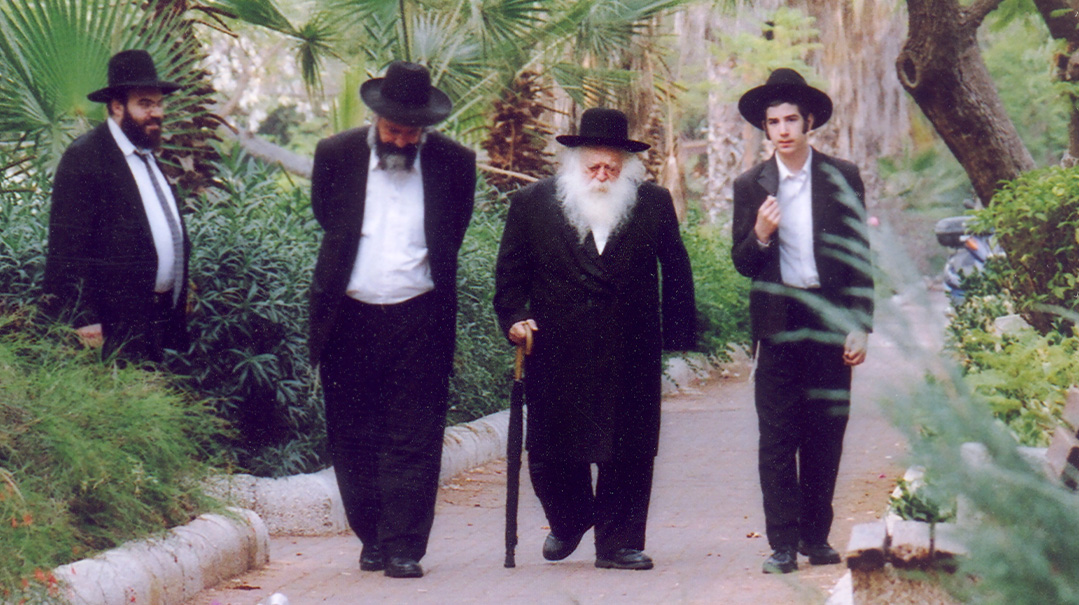The House on Rechov Rashbam
| March 22, 2022What made the house such a magnet wasn’t just the almost tangible Torah in its air. It was the open hearts of Rav Chaim and Rebbetzin Batsheva

Photo: Shuki Lerer
It might be easiest to describe the house by what it lacks.
There is no telephone. No computer. In this house, no electric lights are used on Shabbos, only kerosene lamps.
There is no living room — only a seforim room, as Rebbetzin Batsheva Kanievsky would proudly state. Just about every bit of wall space in the main room is occupied by floor-to-ceiling bookshelves. A small aron kodesh stands next to the bookshelves and a utilitarian shtender near the table.
There is no dining room set here. Stackable plastic chairs are arranged around a plain wooden table.
There’s no island in the spare, neat kitchen. There isn’t even a proper stove. There are tiny patches of counter space aside each small sink and a small two-pot burner.
But the simple walls of 23 Rechov Rashbam managed to contain perhaps the most intense, sustained, and comprehensive Torah learning of a single individual in the modern era.
It was a home where children were raised. It was a beis medrash and a shul. It was the place where some of the most groundbreaking, complex seforim of our era were written and sold. It was an address where public servants burdened by responsibility sought guidance and clarity. It was a haven where people — searching people, broken people, desperate people — found succor and hope. It was the home of
Rav Chaim and the heartbeat of an entire nation.
***
A peek into Rav Chaim’s schedule is nothing short of humbling. It was a relentless, unforgiving regimen that allowed little time for sleep or distraction. Yet he maintained his demanding learning quota for close to eight decades. And those who knew Rav Chaim well attest that the smile on his face at about five in the afternoon was like a general coming home from a battle in victory.
Rav Chaim completed Shas every year since he was 15, but admitted that the first year he tried, it didn’t work out. Rav Chaim didn’t succeed on his second try either, but by the third time his effort paid off — and he maintained that success ever since.
“True, it doesn’t look like a realistic schedule,” his son Rav Avraham Yeshaya once conceded, “but my father is extremely demanding of himself. He never gives himself the slightest leeway. Even if he doesn’t feel well and has to be taken to the doctor, the minute he’s home, he’ll be back at his shtender, completing his daily learning quota. When he was in the hospital, he would wake up and say, ‘What am I doing here? Where is my Gemara?’ ”
A rate of eight daf a day allowed Rav Chaim to complete Shas each year on Erev Pesach. If fewer than eight pages were left to complete a masechta, Rav Chaim ran through the next 15 pages in one go, earning him 30 days of “free time” at the end of the year — time he’d use to write seforim.
Of course, that daily quota of Bavli wasn’t all. Parallel to his seder in Talmud Bavli, Rav Chaim learned the corresponding parts of the Yerushalmi on the same day. However, because some topics are discussed in the Yerushalmi alone, keeping the two Talmuds on a daily parallel course could mean covering up to 60 daf of Yerushalmi in one day. On those days, Rav Chaim woke up even earlier than he normally did and did not receive visitors.
Even as he maintained a grueling learning schedule, Rav Chaim also found time to write a continuous stream of seforim. His seforim are unique in their depth, breadth, and subject matter, and he covered topics rarely addressed by contemporary mechabrei seforim.
For years, the only place to buy Rav Chaim’s seforim was right in his home, on Rechov Rashbam. Yeshivah bochurim, elderly maggidei shiur, and professors would make the trip to the apartment so they could purchase the precious new releases.

Photo: Mattis Goldberg
But what made the house such a magnet wasn’t just the almost tangible Torah in its air. It was the open hearts of Rav Chaim and Rebbetzin Batsheva — open to the troubles and worries of an entire nation.
Every day, people lined up at the doorway, waiting to see Rav Chaim or Rebbetzin Batsheva and share their questions, concerns, or pain. The Rebbetzin received visitors with incredible warmth, sharing home remedies along with brachos, and encouragement along with obvious empathy. Ever since a child of hers had endured a life-threatening illness, she had committed to taking challah with a brachah every day, and when women came to her seeking yeshuos, she shared the power of this mitzvah along with her challah recipe.
Rav Chaim inherited the black swivel chair that belonged to his illustrious father, the Steipler Gaon. Rav Chaim had suffered for a long time from pains in his legs, and as soon as he sat in his father’s chair, the pains miraculously subsided. Seeing that it was a segulah, Rebbetzin Kanievsky a”h would seat women in need of a yeshuah on that same chair.
Along with the streams of women seeking support and encouragement, an entire nation’s questions arrived daily at Rav Chaim’s home. Deep into the age of email and virtual correspondence, 23 Rechov Rashbam earned the status of the single private address in Eretz Yisrael that received the most “real” mail. Every day, postal workers would unload dozens of letters. Rav Chaim made sure to respond to every letter containing a serious inquiry.
Letters sent by Kohanim were answered first, followed by those sent by Leviim, and then everyone else’s questions. Within that third group, he gave precedence to those written by questioners named Yaakov Yisrael — he saw that as a form of kibbud av.
His children remember how he would open the mailbox before lunch, take out all the letters, and respond to them during the meal. It’s one thing to respond to Torah scholars with difficult questions that required Rav Chaim’s bekius. But why would a preeminent gadol respond to every child or bochur in yeshivah ketanah?
“I think that it’s his chesed and that he views it as his harbatzas Torah,” his son Rav Avraham Yeshaya explained several years ago. “I saw a teshuvah that the Rambam wrote to someone who complained to him, ‘Why didn’t you respond to me?’ The Rambam wrote back, ‘In all my life, no one has ever written to me to whom I didn’t respond.’ ”
But it wasn’t just letters. Urgent requests regarding shidduchim, naming babies, medical issues, or tefillos were delivered to Rav Chaim via trusted advisors throughout the day. Politicians, heads of institutions, mechanchim, and businessmen would visit to gain his sage advice. Jews facing crises or dilemmas of any sort knew there was one person who could provide a definitive answer.
And though he held no official position, took no salary, and answered to no boss, Rav Chaim felt obligated to help whoever turned to him.
“What do you think?” Rav Chaim asked rhetorically when the lines of suffering Jews seemed never to end. “How much suffering can I listen to every day?” A very great deal, apparently: Before retiring each night, Rav Chaim’s day concluded with chapters of Tehillim for all those who shared their troubles and challenges with him within the past 24 hours. Rav Chaim ended his day as he spent it, with his heart on Klal Yisrael.
***
An American couple living in Eretz Yisrael waited years for children. Famed maggid shiur Rav Asher Arieli advised the young husband to go to Rav Chaim. The man hesitated.
“I’m nervous he’s going to tell me to do something I can’t do,” he told Rav Asher, since Rav Chaim was famed for advising those waiting for yeshuos to take on some stringency. “I can handle not using electricity on Shabbos, but I can’t handle not using water and having to prepare buckets beforehand.”
Rav Asher smiled encouragingly. “If you can’t do what he says, just tell him, ‘I can’t,’ ” he reassured his talmid. “Rav Chaim is azoi vi a zeide, he’s like a grandfather.”
So many Jews today attribute yeshuos — babies born safely, shidduchim expeditiously finalized or avoided, wise business decisions — to the gadol who was akin to a zeide, the giant who lived in the Heavenly spheres yet had a keen understanding of human nature and appreciated people for who they were and where they stood.
Those tens of thousands of visitors knew that this man existed on a different plane, that his knowledge of Torah and halachah was unparalleled, that his advice carried otherworldly authority — and that his heart was big enough to hold the cares of an entire nation. •
(Originally featured in Mishpacha, Issue 904)
Oops! We could not locate your form.
